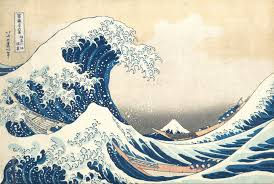Cause and Effect

David Cowles
Jul 21, 2025
“Nothing has a cause… Why should one event cause another? How would one event cause another? How could it?”
A loved one is fond of saying, “Everything has a cause.” Thomas Aquinas would agree. But they’re both wrong! Nothing has a cause…at least not in the way they mean it. In fact, it’s hard to imagine what they mean by cause. Why should one event cause another? How would one event cause another? How could it?
What makes one event a cause and another an effect? Ah, that’s easy. Post hoc ergo propter hoc, the tick of a clock, the transition from a low entropy state to a higher one. But these definitions are arbitrary, and controversial, and don’t tell us why or how something causes something else.
There is ‘A’ and then there is ‘B’ but how exactly does A cause B?
Are you thinking about billiard balls? Then you’re thinking, “by the transfer of momentum.” But the actions of billiard balls on a table begin when the cue ball is struck and end when the billiard balls are once again at rest. From Alpha to Omega, we are talking about one event. Any ‘transfer of momentum’ takes place within that single event, not outside it.
Causality has nothing to do with it…unless you can tell me exactly what caused me to strike the cue ball with X amount of force, imparting Y amount of spin, precisely at angle Z…which you cannot. (Even I cannot!) Absent that, we are talking about a single event that begins when I strike the cue ball and ends when all the balls on the table come to rest.
This is not a problem of free will vs. determinism. It’s a problem of precision. In a chaotic universe like ours, it is impossible to specify the initial conditions of an event so precisely that the outcome can be specified. A single random flap of a butterfly’s wing is enough to trigger a tornado thousands of miles away.
It is impossible to isolate a cause of anything…and foolish even to try. No doubt events are linked in various ways, by time and space and qualia for example, but proximity and similarity are not ‘causality’.
Consider Proust! Remembrance of Things Past charts a cosmic map according to which events are linked solely by their qualia. A day in Italy and a day in France, separated by decades, become a single event. But nothing causes any of it.
Events are focused responses by the whole to the whole. They are knots in the otherwise featureless fabric of Being. In one version of Norse cosmology, Norns ‘create’ events by tying knots in strands of rope. In Homer’s Odyssey, Penelope weaves the future on her loom.
An event begins when the whole (Universe) reflects and passes judgment on itself and then acts on itself (recursion) in response to that judgment. The Universe ‘thinks globally’ (the whole reflecting on the whole) but ‘acts locally’ (via specific and focused events).
And judges? How judge? By comparing what is, the Actual World (Whitehead), with what might be, i.e. the perfect, coincident realization of transcendent, eternal values such as Beauty, Truth, and Justice - aka Utopia, Nirvana, Paradise, the Kingdom of Heaven.
Like Bobby Kennedy, the Universe “dreams of things that never were and asks Why not?”
Every event is causa sui and sui generis; it has its own reasons for being and its own process of becoming. No event is compelled to occur, no event occurs because of another event, and no event is forced to become what it comes to be. Every event enjoys total ontological freedom.
That said, stability can at times play a crucial role in supporting and promoting the realization of Beauty, Truth and Justice. In fact, it is hard to imagine these values being significantly operative in an entirely unstable world. For this reason, absent ‘other considerations’, events tend to conform where possible to their inherited Actual Worlds.
Events are! Only events are. Therefore they are quanta of Being; each event is ‘the image and likeness’ of Being. Nothing exists outside of Being; therefore, nothing exists apart from events…or independent of an event. Therefore, if the created world exists (above), events can be nothing other than free.
What might appear as elements or phases of an event exist only in the context of that event. They are real only in so far as they contribute to the origination and realization of that event. From cosmos to quarks, only events exist, and nothing exists outside of those events.
Our naïve notion of causality results from several ontological errors. First, we attempt to break events down into component parts and/or stages, but only events themselves are ultimately real. They are ‘quanta’ of Being; they cannot be dissected.
Next, we imagine that events exist in a continuum and that what’s ‘local’ bleeds into its surroundings. In fact, events are stochastic: their borders are well defined. The first thing we learn as infants is the distinction between me and not-me. We do not experience any undifferentiated border region.
Finally, we imagine that events intersect, overlap, one another. We’ve been brainwashed by the Euclidean geometry we studied in high school. I used to think this too…until I discovered that the Cosmos is not fundamentally Euclidean. In fact, it’s not even Archimedean It cannot be modeled using only Real Numbers.
In a non-Archimedean universe (like ours), there is no such thing as tangency. Two events are either disjoint or one is wholly contained within another. Events are related hierarchically, not horizontally.
That said, multiple disjoint events can be contained within a single meta-event. The discontinuous battles of First Manassas and Gettysburg are contained within a single, continuous event known as the Civil War.
In this model of reality, the linear quantitative relationships we were forced to internalize as students disappear. There are no transitive, commutative, associative or distributive properties. As if! In what world is the order of operations not important? Adding B to A is never the same as adding A to B…except in a classroom.
Without the properties of elementary school arithmetic, the Universe can shed its armor and open itself to a much richer menagerie of relationships. For example, if A contains B and C, A may nevertheless be smaller than B or C or (B+C). Let that sink in!
Strange but not that strange. Television has been showcasing a non-Archimedean world since 1963. In fact, Doctor Who is now in its 26th season. During these years, there have been many ‘doctors’ but the star of the show has remained constant: the TARDIS – an old fashioned English phone box whose non-Archimedean interior is vastly larger than its exterior.
You might be thinking that a Cosmos without horizontal connectivity would be boring, perhaps even inert, but you would be wrong. In my super-simplified ‘toy universe’ (above), B and C do influence one another, but not directly. They influence each other through the intermediation of A.
So this non-Archimedean world is actually much richer than our hum drum Euclidean model. B and C both influence A and A influences both B and C. Influence flows both ways: from the parts to the whole and from the whole to each of its parts but never from one part to another. “Jam yesterday and jam tomorrow but never jam today.” (Carroll)
It gets better. The fundamental structure of the Universe is ‘fractal’, so scale is only locally (comparatively) relevant. The Universe is infinitely self-similar: it looks the same regardless of the scale at which you view it. The geometry of galaxies recapitulates the geometry of atoms. The phenomenon of scale is epiphenomenal.
This model makes the so-called Butterfly Effect commonplace. In fact, everything influences everything else through the medium of its containment. The whole is perpetually adjusting to each of its parts and simultaneously adjusting those parts to the whole. Everything is recursive, self-modifying. What goes around does indeed come around…but it causes nothing.
Every whole is a part and every part is a whole. To paraphrase Stephen Hawking, “It’s wholes and parts (not turtles)…all the way down.”
The Universe is massively non-linear. In response to the free and unconditioned events that populate it, the Uber-event, Universe, which is its own part (lie quiet Russell, I mean that is Bertrand Russell), continually self-adjusts, gradually seeking the homeostatic balance we know as Peace. (Isaiah 11: 6)
That the Universe ends in Peace is a certainty; it’s hardwired in Being itself. How the Universe arrives at Peace is entirely undetermined, unconditioned, and free. Nothing causes anything but itself.
***
Katsushika Hokusai’s The Great Wave off Kanagawa, created around 1831 as part of the Thirty-Six Views of Mount Fuji series, is a woodblock print (10 1/8 × 14 15/16 in.) held by The Metropolitan Museum of Art in New York; it captures a towering wave frozen in time above three boats, dramatizing nature’s force within a suspended moment. Like the events described in the essay, the wave exists as a complete, self-contained phenomenon, reflecting the idea that what appears causal is often just a recursive expression of the whole.
Do you like what you just read and want to read more Thoughts? Subscribe today for free!
- the official blog of Aletheia Today Magazine.







